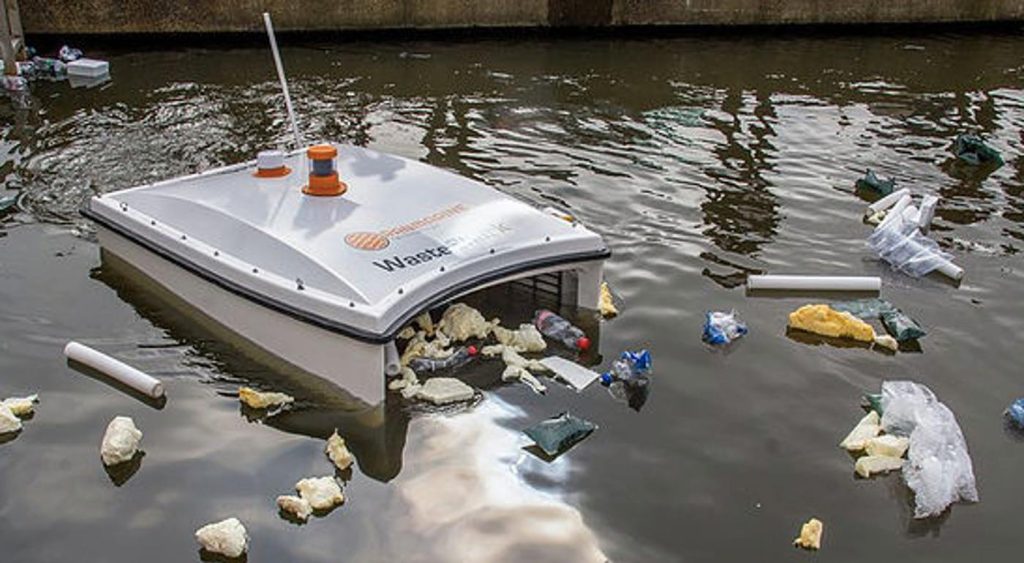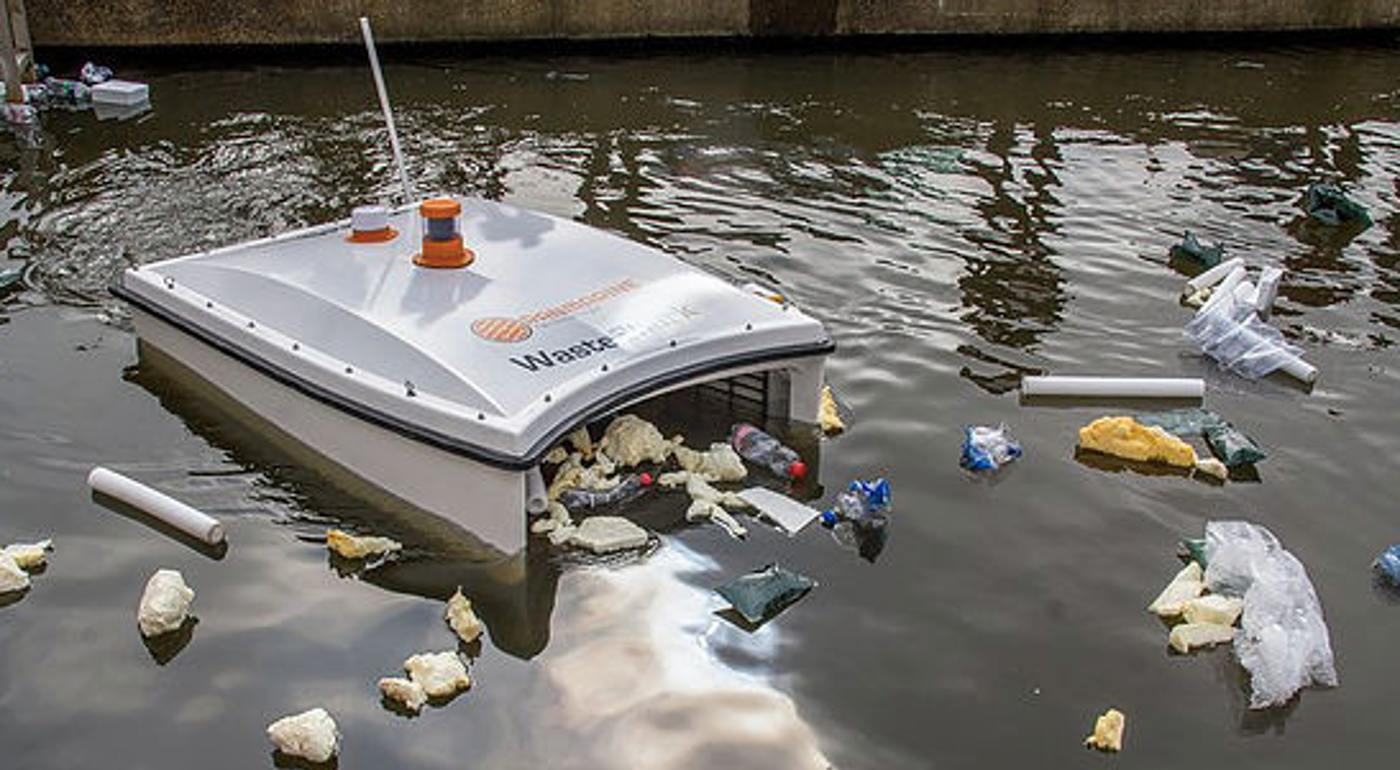
From Chennai to Trentino alto Adige to Baltimore, inventors are churning out methods of stopping plastic pollution from entering the ocean by picking it out of riverways.
They come in different shapes and sizes, and a Dutch company just added a whale-shark inspired drone that can cobble 160 liters of waste to the mix.
Developed by RanMarine in Rotterdam, the drone project was both straightforward, but with a pretty long checklist. It had to be automated, zero-emissions, easy to use, economic to deploy and maintain, and be able to clean a freshwater environment without harming it.
The result is WasteShark, which is about 4 feet long, and quietly captures trash in a tray between its two pontoons. Like the whale shark that provided its inspiration, a grid stops anything sizeable from entering its mouth, until it detects trash and the grid is lowered.
One the drone is filled, it’s steered back to the water’s edge, where the tray can be easily removed, and emptied into a larger receptacle.
A world of river cleaning devices
All kinds of strategies exist for capturing plastic before it pollutes the ocean. WasteShark is perfect for lakes, and other large ponds where the trash will mostly bob around.
Other challenges and strategies exist in countries around the world. On the river Cooum that runs through the city of Chennai in India, whatever equipment AlphaMERS Ltd. used to plan their cleanup had to be able to withstand the flooding force of the monsoon rains.
MORE: Designer Turns Mussel Shells That Once Clogged London’s Water Pipes into Gorgeous Tile
Their solution was steel mesh that is draped diagonally across the flow of the river, arresting the trash, but allowing boat traffic to pass over undisturbed. The Floating Trash Barrier (FTB) collected 2,200 tonnes of plastic in the first year. AlphaMERS have also developed drones that clean up oil spills by sifting the sludge out and separating it from the water inside their robot bodies.
GNN reported on an innovate Italian solution that is much more portable and affordable, and perfect for smaller rivers and canals. River Cleaning are little buoys anchored to the river bed by tethers. Any passing boat can knock them this way and that, but they will always return to their formation—like FTB, in a diagonal line across the water. They are little cogs that spin in the current and push trash down the line of buoys until they reach the bank where they enter a collection cage.
In Baltimore, Maryland, locals love their neighbor “Mr. Trash Wheel” a simple water mill that picks up trash at the mouth of a river and dumps it into a floating barge. The googly-eyed trash collector has been gobbling up millions of pounds of the city’s river-borne garbage for years, and led to the creation of several water-wheel allies like Capt. Trash Wheel, and Prof. Trash Wheel.
The Netherlands’ Bojan Slat, who for years raised awareness of the Great Pacific Garbage Patch, and who is now cleaning it up, also on the side has been working to clean rivers. His non-profit, The Ocean Cleanup, suggests that 80% of all the plastic waste in the ocean arrives through 1,000 of the world’s rivers, and his “Interceptor,” a large, shore-operated electric barge anchors itself on the side of the 50 worst polluting rivers in the world, like the Klang in Malaysia.
CHECK OUT: How Fog Nets Are Making Water Abundant in Arid Africa – And May Be Useful in California
There, a barrier spans diagonally, half-way across the river so as not to impede boat traffic, and trash is fed into the Interceptor’s mouth where it finds a conveyor belt. The belt scoops up the waste and dumps it into a large container which when full can be offloaded and picked up by most semi-trucks.
All around the world people are taking water-born trash collecting seriously, and they’re getting it right. With any luck, the next generation will feature far more happy fishes, corals, and humans besides.
SHARE This Innovation With Your




















